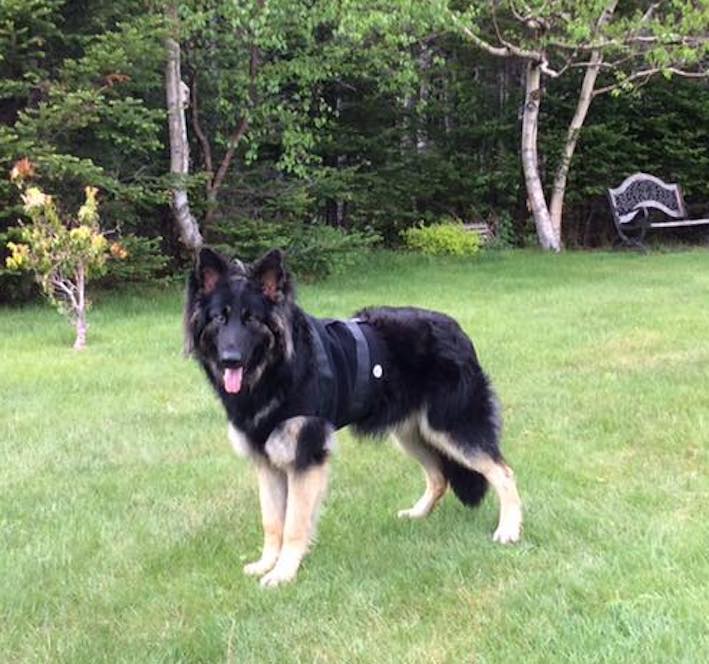
HOLTERING YOUR SHILOH
What is GSDIVA?
A normal heart beat is initiated from the Sinus node of the dog’s heart and that “message” to contract is passed from muscle cell to muscle cell in a sequential manner in order to squeeze the blood into the next chamber.
PVCs (pre ventricular complexes) are extra heart beats that are generated from the ventricle cells themselves. Isolated PVCs can be common in dogs and for the most part are not harmful. These can occur due to illness such as fever or diarrhea that can lead to electrolyte imbalance, anxiety, or medications leading to QT prolongation.
These PVC’s can also be caused by a disease called German Shepherd Inherited Ventricular Arrhythmia - GSDIVA for short. This is an inherited heart condition affecting the ability of the heart to efficiently conduct the electrical impulses that cause it to contract.
Small amounts of arrhythmia are inconsequential in the normal scheme of things but when many incidences of arrhythmia occur together, the ability of the heart to push blood through the body is compromised. Tachycardia can occur and with it, the possibility of sudden death.
Since the Shiloh Shepherd genetically stems from the German Shepherd, dogs from our breed may also be affected.. GSDIVA may be inherited from one or both affected parents. This disease is a puppy/ adolescent dog issue as, by the time the dog reaches approximately 24 months old, the heart fibres have matured, conduction has corrected and all or most signs of arrhythmia are gone and the threat of sudden death is diminished.
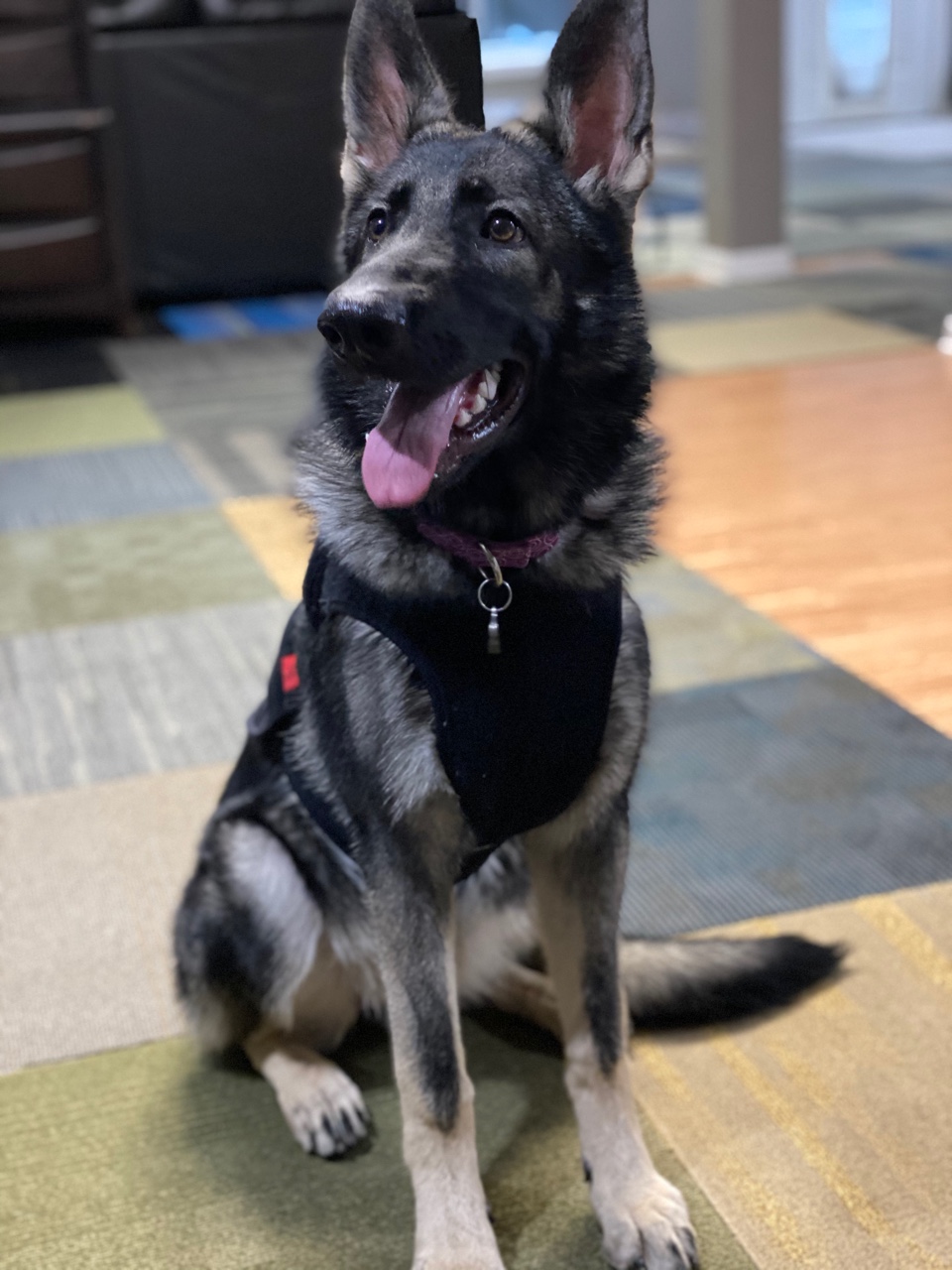
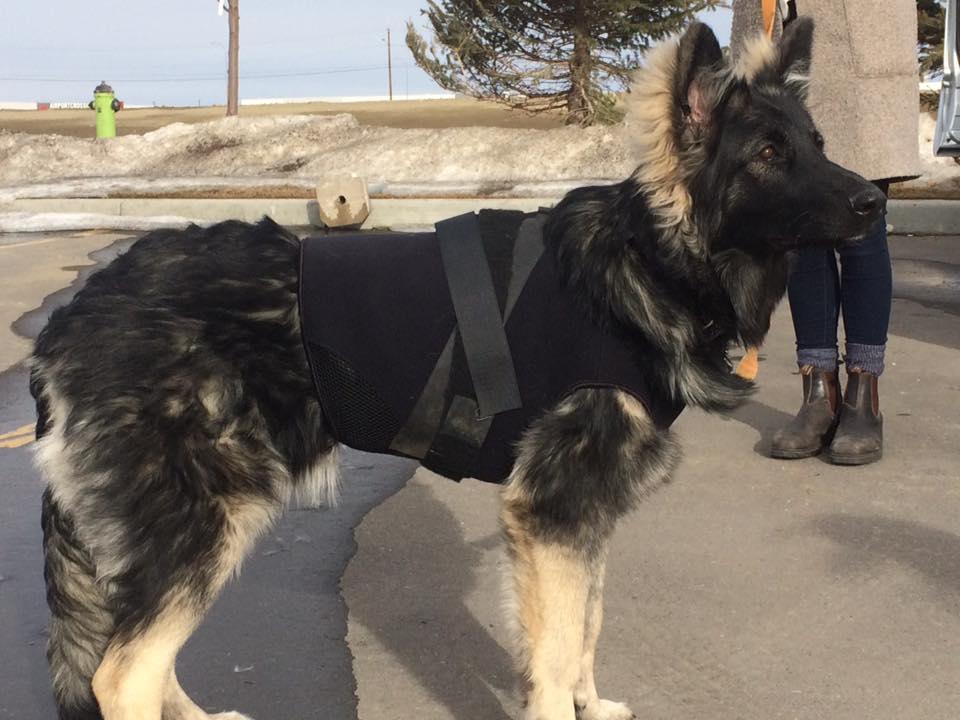
How do we test for GSDIVA?
There are no outward symptoms of GSDIVA, and affected dogs seem to grow out of it at an early age. Holtering is a non-invasive method of monitoring the electrical activity of your dog’s heart. The holter monitor is worn for 24-48 hours to assess the dog’s heart rhythm. During this time, the holter records every heartbeat and potential irregular heart rhythms. By screening for this extended period of time, it allows us to get a more accurate analysis of the rhythm and rate of the heart through both sleep and active cycles. The data is analyzed and reviewed by certified technician and a report is provided to the owner for review. If necessary, a cardiologist is on hand to interpret the results.
All ISSA breeding dogs are required to be screened for GSDIVA in this manner and only those deemed clear may move on and are eligible for breeding. To supplement the information that we are collecting on our breeding stock, we are also requesting that as many of the puppies out of a litter be screened as well. Your breeder may require it as part of their contract. It is through this effort that we may be able to identify the pattern of this disease and in future, may be able to eradicate it from our gene pool.
Normal vs abnormal?
A dogs normal heart rate is 60-160 beats per minute. These beats should occur in a regular pattern. As stated above, PVC’s (pre-ventricular complexes) are extra abbreviated heart beats that may be caused by GSDIVA or other reasons. If more than 50 PVCs are detected in a 24-hour period, this is considered an abnormal holter reading and makes them ineligible to be bred.
Sample ReportThese two came from the same litter. |
|
|---|---|
This holter shows an abnormal number of irregular beats. 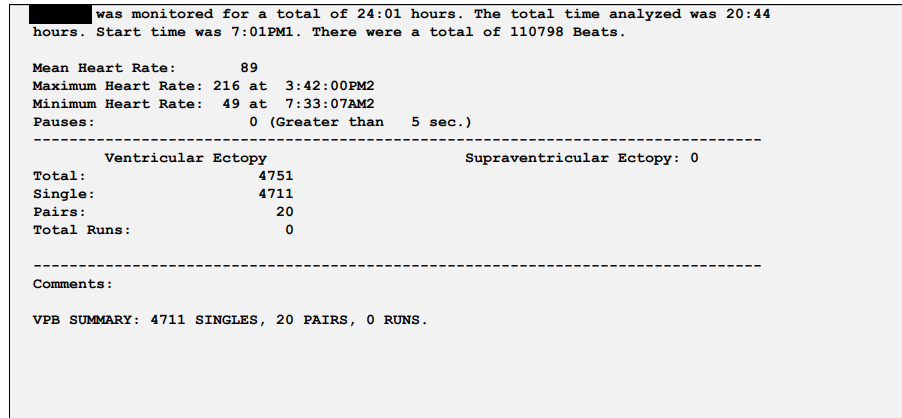 |
This is a normal report.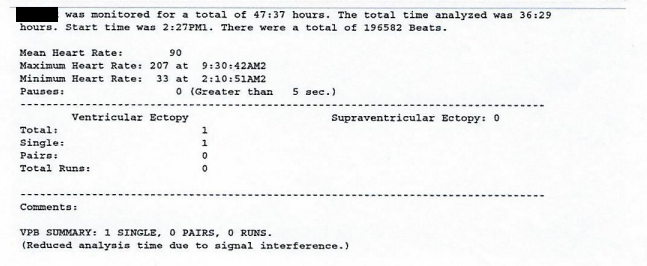 |
What are my options for holtering my dog?
- ISSA
- Contact Shani Gadwaw (Holteralliance@gmail.com) for more information
- Cost Range: $50-80
- Echo Shiloh’s Holter Monitor Rental
- Rental Info
- Cost $125
- North Carolina State university
- VH – Diagnostic Holter Monitor Request Form - NC State Veterinary Medicine
- 24h/48h Diagnostic Holter Monitor ($275/$375) - Technician analysis and cardiologist interpretation.
- Clients will receive an emailed report from Dr. Kate Meurs with full interpretation and commentary on your dog’s Holter results.
- Veterinarian Cardiologist Holter Monitoring for Pet Health Problems
- More information
- Holter Monitoring (using our digital recorders): 24 hours: $175.00
- Holter Monitoring (using our digital recorders): 48 hours: $275.00
- College of Veterinary Medicine at Washington State University
- More information
- Cost is $285 (including shipping, analysis and cardiologist interpretation with report
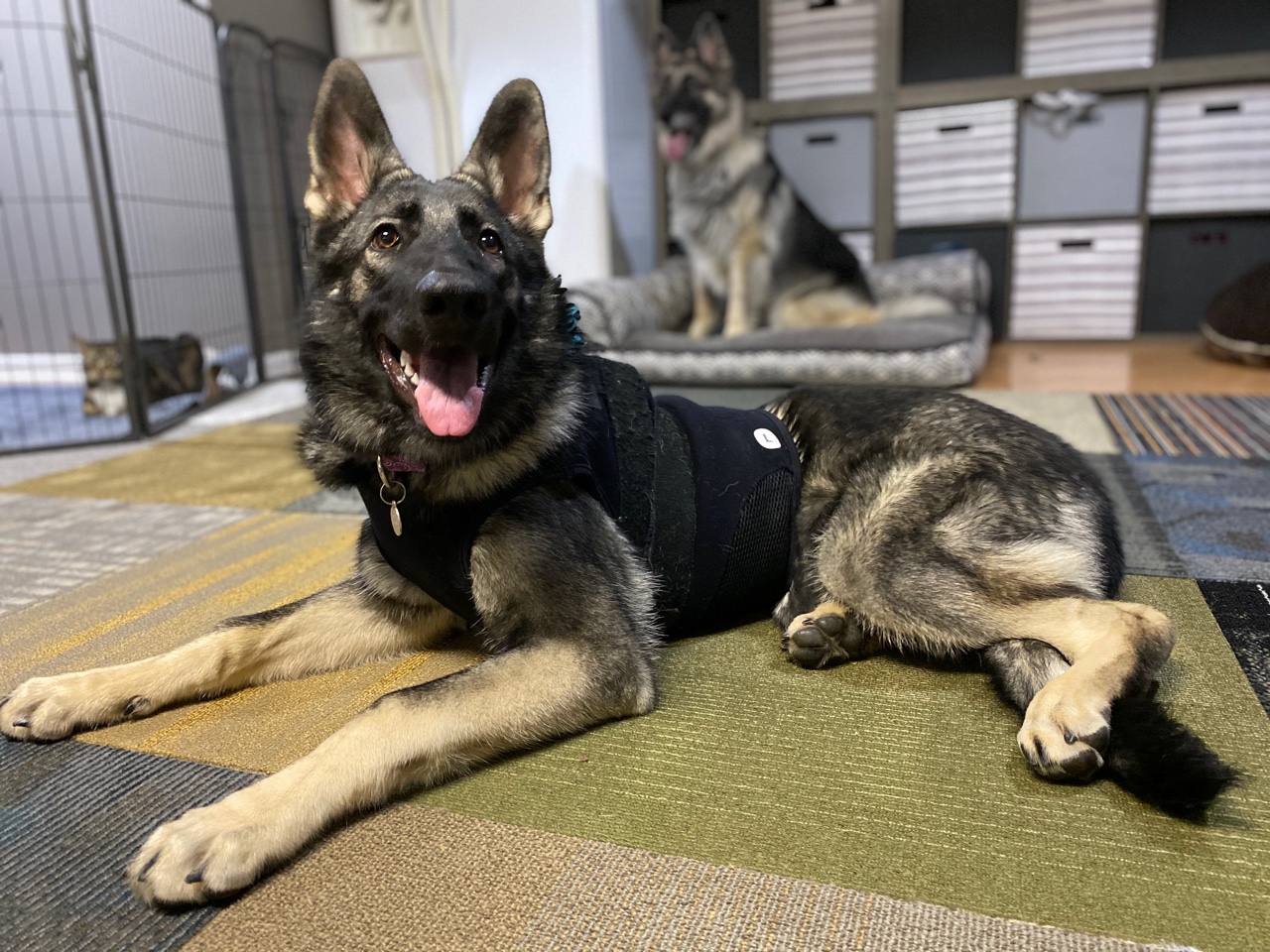
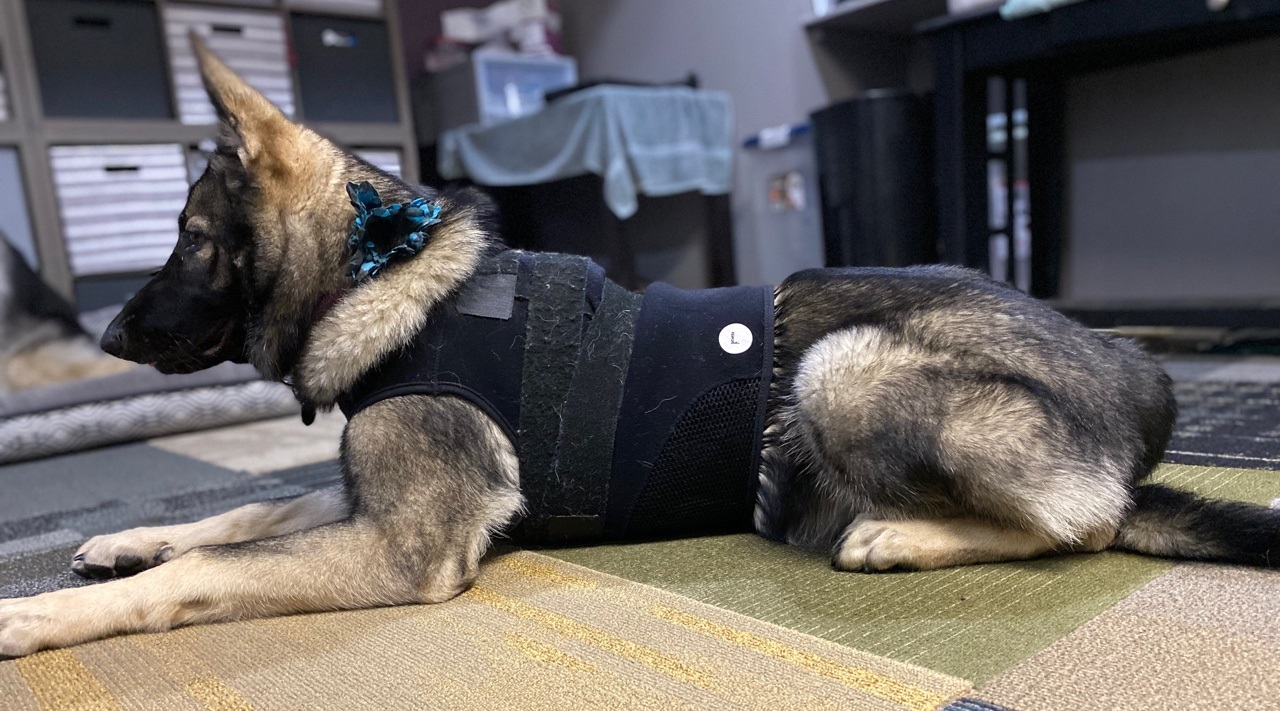
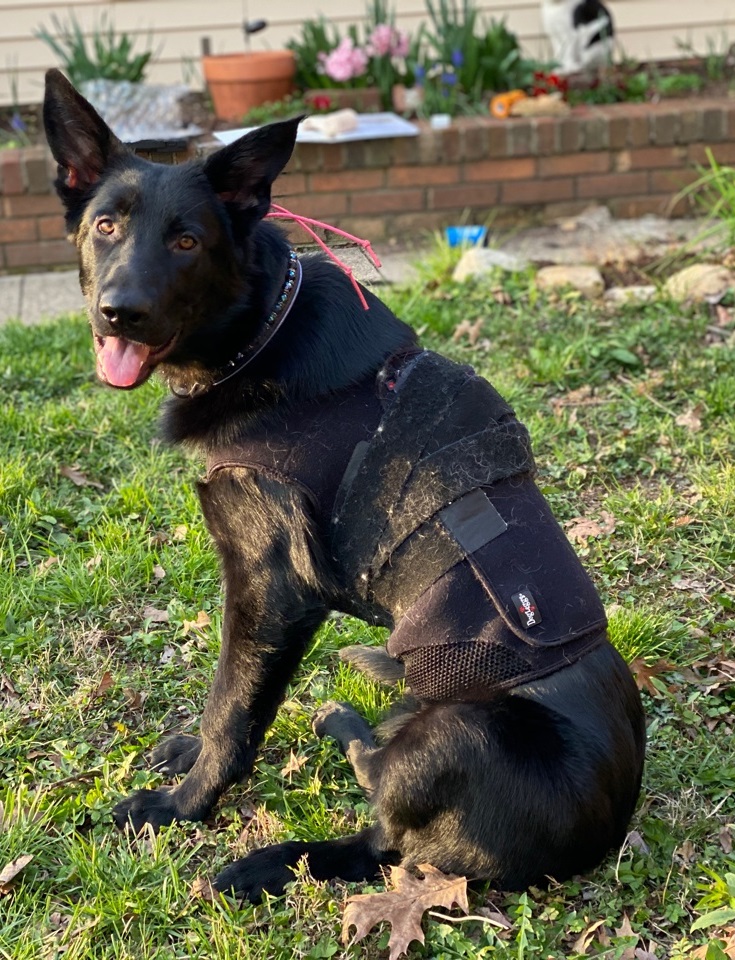
What are the rules to follow when holtering?
For ISSA, the age requirement is 5.5 months to 8 months for holtering your puppy. When using the ISSA club holter, the owner of the puppy (or breeder if an agreement has been made) is responsible for the cost of the rental and all shipping cost and insurance fees. The holter rental is for 10 days with extra cost for days kept thereafter.
Small patches of hair on either side of the ribs needs to be shaved to allow the electrode patches to adhere to the skin. It is recommended that the owner finds a means for shaving their puppy either by a professional groomer or local vet who may also be able to help you apply the holter. These arrangements should be made prior to the arrival of the holter so that the testing can be completed quickly and efficiently as there are often a number of pups in a litter that require testing in a short period of time.
This is expensive medical equipment and requires that your pup is supervised through the duration of the test. If the holter is lost or damaged, you will be responsible for the cost of the repair or cost of new holter if not repairable.
Elizabethan collar is required if pup is to be left unsupervised, no exceptions.
Tips and rules for a successful holter
- Shaving the pup is the most stressful part of the holtering process it is highly recommended that if you are not familiar on the process of shaving that you seek professional help with your local groomer or vet.
- There are videos available too on YouTube.
- Using rubbing alcohol to help make the pads stick and additional conductor gel may provide a better connection and conductivity.
- Puppies like to chew so making sure the leads are not visible or accessible to the puppy is a must.
- And choosing a day that you will be able to keep an eye on your puppy so that you can keep a diary of his events, when he is active, when he is sleeping, and any other pertinent information you may want to share. This helps us when reviewing the holter to see when the abnormal rhythms occur. If they occur during rest this is more concerning than if they occur with play.
